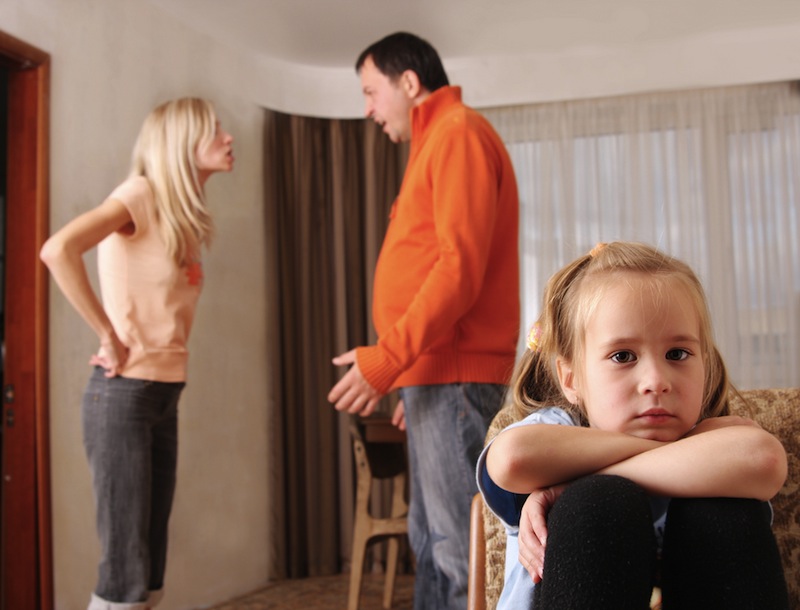Child Abuse Head Injuries Increased During Recession, Study Finds

Despite earlier reports that child abuse did not increase during the economic recession of 2007 to 2009, a new study finds that at least one measure of abusiveness went up in several areas of the U.S. during that time.
Abusive head trauma (AHT), or head injuries from abuse in children, became more common in three geographic areas in the U.S. during the hard times of the recession compared with the years prior, according to a study published today (Sept. 19) in the journal Pediatrics. The study can't prove that the hard times caused the increased injury rate, but the study researchers found the data troubling.
"The presence of an association between the economy and the AHT rate should be sufficient to spur a discussion of specific stressors," they wrote in their report. Physicians might want to think of recessions as times when abuse is more likely, they wrote, much like doctors would keep a close eye out for red-flag symptoms during a disease outbreak.
Abuse in hard times
Led by Rachel Berger, a professor of pediatrics at Children's Hospital of Pittsburgh, the study researchers gathered data on abusive head trauma in children under the age of 5 in three geographic regions: six counties near Seattle, Wash., 23 counties in western Pennsylvania, and 45 counties in Ohio and northern Kentucky.
The counties were chosen because each was served by only one trauma center and each had a trained child abuse protection team made up of the same staff members over the five-and-a-half year study period. Those safeguards ensured that no children in the counties fell through the cracks because they had visited other trauma centers, and also that staff changes in the child abuse team didn't change the way abuse was measured.
Between Jan. 1, 2004, and June 30, 2009, 422 kids in all three regions were diagnosed with abusive head trauma. About three-quarters were under the age of 1. (Abusive head trauma can occur when someone shakes a young baby, rattling the child's brain against his or her skull. AHT can also occur after a child is dropped or hit.)
Sign up for the Live Science daily newsletter now
Get the world’s most fascinating discoveries delivered straight to your inbox.
Alarmingly, the rates of abuse went up when the United States entered an economic recession between Dec. 1, 2007, and June 30, 2009, despite the fact that the demographics of the treated kids didn’t change. [Read: The History of Human Aggression]
Before the recession, the researchers found, 8.9 in every 100,000 kids received head trauma from abuse. During the recession, that number rose to 14.7 in every 100,000 kids. Head injuries not caused by abuse remained stable throughout the whole study.
Watching out for child abuse
Although this study can't definitively prove that the recession caused the additional trauma, there is precedent to the theory that economic stress makes child abuse worse. A 1981 study published in the journal Child Development found that abuse went up when unemployment did. Five years later, a study in the journal Child Abuse and Neglect found the same phenomenon.
The current study found no link between local unemployment rates and abusive head trauma, but economic data on unemployment doesn't take into account underemployment or people who have given up on finding work, the researchers wrote. Job loss can mean spending more time with children, raising the risk of abuse, they wrote, and inexperienced caregivers may suddenly find themselves taking care of children full-time.
The results are in contrast to two reports, in 2008 and 2009, by the Administration on Children, Youth and Families, which did not detect an increase in child abuse during the recession. Those reports were based on substantiated abuse cases from Child Protective Services (CPS), which may not capture the same level of maltreatment as doctors reporting medical diagnoses in the hospital, Berger and her colleagues wrote. It's also possible that overall abuse fell, but abusive head trauma went up, for unknown reasons.
The researchers argue that their results should be taken as a wake-up call for doctors treating potential child abuse cases in hard times.
"If other regions of the country have seen similar increases," they wrote, "this result would correspond to hundreds, if not thousands, of excess AHT cases."
The research was funded by the Matty Eappen Foundation, a foundation dedicated to preventing abusive head trauma.
You can follow LiveScience senior writer Stephanie Pappas on Twitter @sipappas. Follow LiveScience for the latest in science news and discoveries on Twitter @livescience and on Facebook.

Stephanie Pappas is a contributing writer for Live Science, covering topics ranging from geoscience to archaeology to the human brain and behavior. She was previously a senior writer for Live Science but is now a freelancer based in Denver, Colorado, and regularly contributes to Scientific American and The Monitor, the monthly magazine of the American Psychological Association. Stephanie received a bachelor's degree in psychology from the University of South Carolina and a graduate certificate in science communication from the University of California, Santa Cruz.









